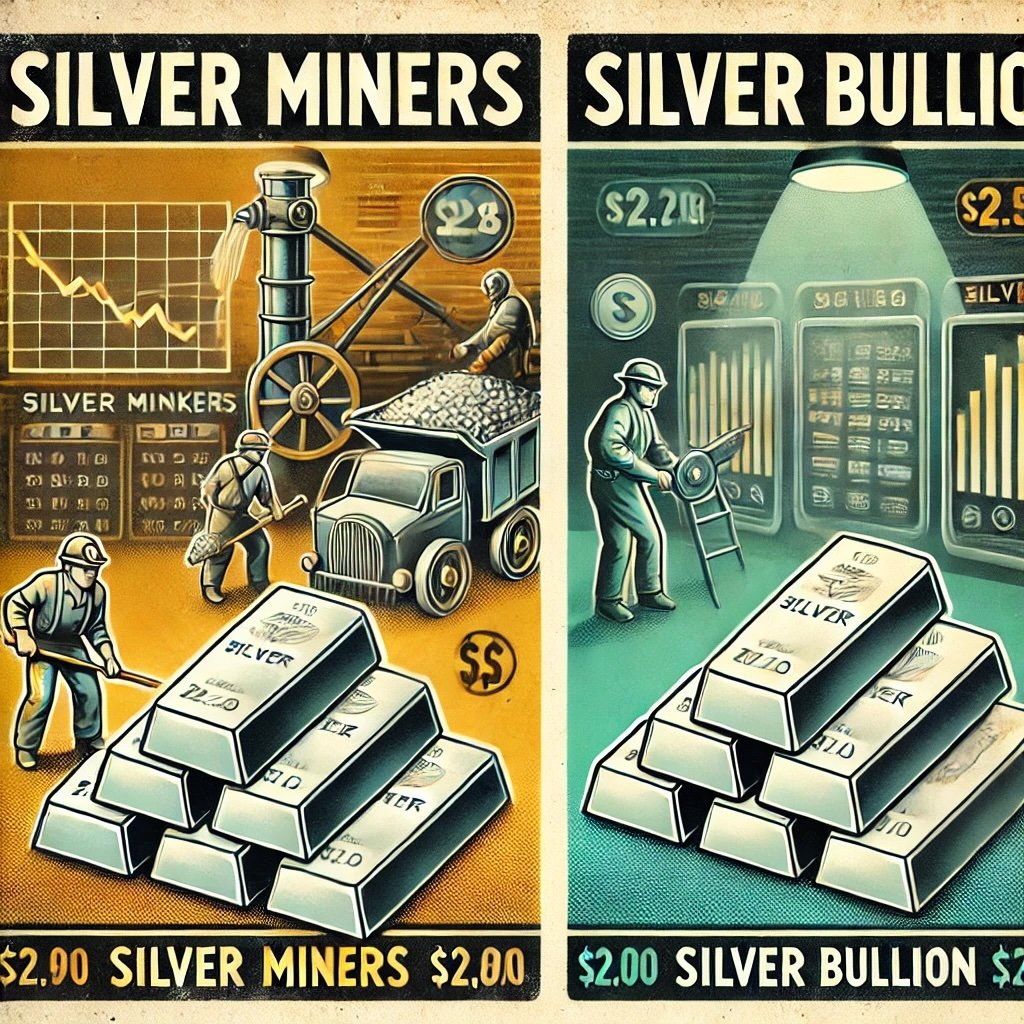Value investing is an investment strategy that has been used by some of the most successful investors in history to achieve outstanding long-term returns. The basic idea behind value investing is to buy stocks that are trading at a discount to their intrinsic value, or what the stock would be worth if the company were liquidated. In this article, we will take a closer look at four of the most famous value investors: Warren Buffett, Benjamin Graham, Howard Marks, and Joel Greenblatt.
Warren Buffett
Warren Buffett is widely regarded as one of the most successful investors in history, and his investment philosophy is heavily influenced by value investing principles. Buffett is the Chairman and CEO of Berkshire Hathaway, a conglomerate that owns a diverse range of businesses, including GEICO, Dairy Queen, and Burlington Northern Santa Fe.
source: The Swedish Investor on YouTube
Buffett’s approach to value investing is centered around the concept of “intrinsic value,” which he defines as the present value of a company’s future cash flows. In other words, he looks for companies that have a strong competitive advantage, a solid balance sheet, and a history of generating consistent profits over time.
One of the key principles that Buffett follows is to invest for the long term. He famously said, “Our favorite holding period is forever,” which means that he is willing to hold onto investments for many years, even if the stock price fluctuates in the short term.

Benjamin Graham
Benjamin Graham is considered to be the “father of value investing” and is the author of the classic book “The Intelligent Investor.” Graham’s approach to value investing is focused on buying stocks that are trading at a discount to their intrinsic value, as well as investing in companies that have a strong balance sheet and a history of generating consistent profits over time.
source: The Swedish Investor on YouTube
Graham’s investment philosophy is based on the concept of “margin of safety,” which means that investors should only buy stocks when they are trading at a significant discount to their intrinsic value. By doing so, investors can reduce their risk and increase their potential for long-term returns.

Howard Marks
Howard Marks is the founder of Oaktree Capital Management, a leading investment firm that specializes in distressed debt and other value-oriented investments. Marks’ approach to value investing is centered around the concept of “second-level thinking,” which means that investors should think differently than the market and look for opportunities where others do not.
source: The Swedish Investor on YouTube
Marks is also known for his focus on risk management and his willingness to hold onto investments for the long term. He believes that by investing in undervalued companies with a strong competitive advantage and a history of generating consistent profits over time, investors can achieve outstanding long-term returns.

Joel Greenblatt
Joel Greenblatt is a value investor and the author of the best-selling book “The Little Book That Beats the Market.” Greenblatt’s approach to value investing is focused on buying stocks that are trading at a discount to their intrinsic value, as well as investing in companies that have a strong competitive advantage and a history of generating consistent profits over time.
Greenblatt is also known for his use of a quantitative investing strategy called “The Magic Formula,” which is based on the principles of value investing. The Magic Formula involves ranking stocks based on two metrics: earnings yield and return on capital. By investing in the top-ranked stocks, investors can achieve outstanding long-term returns.
source: The Swedish Investor on YouTube
Value investing has been used by some of the most successful investors in history to achieve outstanding long-term returns. Warren Buffett, Benjamin Graham, Howard Marks, and Joel Greenblatt are just a few examples of investors who have successfully applied value investing principles to achieve outstanding long-term returns. By focusing on buying undervalued companies with a strong competitive advantage and a history of generating consistent profits over time, investors can reduce their risk and increase their potential for long-term returns.
Warren Buffet vs Benjamin Graham: Similarities & Differences
Warren Buffett and Benjamin Graham are two of the most well-known value investors of all time. While their investment strategies have some similarities, there are also notable differences between the two. In this article, we will explore the similarities and differences between Warren Buffett and Benjamin Graham and how they have influenced the world of value investing.

Similarities
Both Warren Buffett and Benjamin Graham are proponents of value investing. They both believe that it is possible to identify stocks that are trading at a price lower than their intrinsic value. Intrinsic value is the true worth of a company based on its fundamental business and economic characteristics. Buffett and Graham believe that by identifying companies with a lower market price than their intrinsic value, investors can achieve significant returns in the long run.
Both investors also focus on the importance of financial analysis. They rely on a set of key metrics to evaluate a company’s financial health and growth potential. These metrics include earnings per share, price-to-earnings ratio, price-to-book ratio, return on equity, and free cash flow. By analyzing a company’s financial statements, they can identify undervalued stocks that have strong potential for growth.
Differences
Despite their similarities, there are notable differences between Warren Buffett and Benjamin Graham’s investment strategies. One of the key differences is their approach to risk management. Graham was more focused on minimizing risks and maximizing the margin of safety. He used a set of quantitative metrics to identify undervalued stocks, such as price-to-earnings ratio and price-to-book ratio. Graham believed that a stock was only worth investing in if the margin of safety was high enough to ensure a lower risk of loss.
Buffett, on the other hand, is known for his willingness to take on riskier investments. He believes that risk management is important, but he also understands that taking on some level of risk is necessary to achieve significant returns. He has invested in a wide range of companies, including technology firms and airlines, that Graham would have considered too risky.
Another key difference between the two investors is their investment horizon. Graham’s investment philosophy was focused on short-term gains. He believed that once a stock reached its intrinsic value, it was time to sell. Buffett, on the other hand, is known for his long-term investment horizon. He believes that holding onto quality stocks for the long run is the best way to achieve significant returns.
Final Thoughts
Warren Buffett and Benjamin Graham are two of the most famous value investors of all time. While they share a similar investment philosophy and use many of the same key metrics to evaluate companies, there are also notable differences between the two. Graham was more focused on minimizing risks and achieving short-term gains, while Buffett is known for his willingness to take on riskier investments and his long-term investment horizon. Understanding these similarities and differences can help investors develop their own investment strategies based on their individual risk tolerance and investment goals.

Howard Marks vs Joel Greenblatt: Similarities & Differences
Howard Marks and Joel Greenblatt are two prominent value investors with distinct investment strategies. Both investors have achieved notable success in their respective fields and have influenced the world of value investing. In this article, we will explore the similarities and differences between Howard Marks and Joel Greenblatt and how their investment strategies differ.
Similarities
Both Howard Marks and Joel Greenblatt are proponents of value investing. They both believe that it is possible to identify stocks that are trading at a price lower than their intrinsic value. Intrinsic value is the true worth of a company based on its fundamental business and economic characteristics. Marks and Greenblatt use various methods to identify undervalued stocks, including financial analysis and qualitative assessment.
Another similarity between the two investors is their focus on risk management. They both place a significant emphasis on minimizing risk and preserving capital. This is reflected in their investment strategies, where they use a range of methods to identify undervalued stocks with strong growth potential while minimizing risk. They both understand the importance of having a margin of safety when investing and aim to reduce the risk of loss by purchasing stocks at a significant discount to their intrinsic value.
Differences
Despite their similarities, there are notable differences between Howard Marks and Joel Greenblatt’s investment strategies. One of the key differences is their approach to valuation. Greenblatt’s investment philosophy is centered around the concept of “value investing 2.0.” This approach involves the use of a proprietary formula that ranks companies based on their earnings yield and return on capital. Greenblatt believes that by investing in companies with high earnings yield and return on capital, investors can achieve significant returns in the long run.
Marks, on the other hand, takes a more qualitative approach to valuation. He believes that assessing the qualitative factors of a company, such as its competitive advantage and management team, is just as important as the quantitative factors. Marks also places a significant emphasis on market psychology and the impact it can have on stock prices.
Another key difference between the two investors is their investment horizon. Greenblatt’s investment strategy is focused on short-term gains. He believes that by investing in a portfolio of undervalued stocks, investors can achieve significant returns in the short run. Marks, on the other hand, has a long-term investment horizon. He believes that holding onto quality stocks for the long run is the best way to achieve significant returns.
Final Thoughts
Howard Marks and Joel Greenblatt are two prominent value investors with distinct investment strategies. While they share some similarities, such as their focus on value investing and risk management, there are also notable differences between the two. Greenblatt’s investment philosophy is centered around the concept of “value investing 2.0” and focuses on short-term gains, while Marks takes a more qualitative approach to valuation and has a long-term investment horizon. Understanding these similarities and differences can help investors develop their own investment strategies based on their individual risk tolerance and investment goals.
source: The Swedish Investor on YouTube

The Future Of Value Investing: Who Will Be The Next Great Value Investor?
Value investing has been a popular investment strategy for decades, and it has evolved over time as investors and markets have changed. However, the future of value investing is uncertain, and it is possible that the traditional approaches to value investing may not be as effective in the future as they have been in the past. In this article, we will explore how value investing might change in the future from famous past approaches.
Shift from Tangible to Intangible Assets
One of the significant changes that may impact value investing is the shift from tangible to intangible assets. In the past, value investors primarily focused on tangible assets such as inventory, equipment, and real estate. However, with the rise of the knowledge economy, intangible assets such as intellectual property, brand value, and human capital have become increasingly important. Future value investors may need to incorporate intangible assets into their investment analysis to identify undervalued companies effectively.
Incorporating ESG Considerations
Another change that may impact value investing is the increasing importance of environmental, social, and governance (ESG) considerations. Today’s investors are becoming more socially and environmentally conscious, and they are looking for investment opportunities that align with their values. Value investors who incorporate ESG considerations into their investment analysis may be better positioned to identify companies that have a sustainable competitive advantage and long-term growth potential.
Embracing Technology
Technology has transformed the way we live and work, and it has also impacted the investment landscape. The future of value investing may involve the use of artificial intelligence and machine learning to analyze vast amounts of data and identify undervalued stocks more efficiently. Value investors who embrace technology and use it to their advantage may be better positioned to achieve significant returns.
Focus on Emerging Markets
Another potential change in value investing is the increased focus on emerging markets. In the past, value investors primarily focused on developed markets such as the US and Europe. However, emerging markets such as China and India have seen significant economic growth in recent years, and they may present new opportunities for value investors. Investing in emerging markets can be challenging due to the lack of transparency and regulatory oversight, but value investors who can navigate these challenges may be able to identify undervalued companies with significant growth potential.
Incorporating Behavioral Finance
Behavioral finance is an emerging field that seeks to understand how investors make decisions and how their biases can impact investment outcomes. Future value investors may incorporate behavioral finance into their investment analysis to identify companies that are undervalued due to market psychology or investor biases. By understanding the emotional factors that drive investment decisions, value investors may be better positioned to identify undervalued stocks that have long-term growth potential.

Value Investing Final Thoughts
Value investing has been a popular investment strategy for decades, but it may need to adapt to changing market conditions to remain effective in the future. The future of value investing may involve a greater focus on intangible assets, ESG considerations, technology, emerging markets, and behavioral finance. Value investors who can adapt to these changes and incorporate them into their investment analysis may be better positioned to identify undervalued companies with significant growth potential.
Important Information
Comprehensive Investment Disclaimer:
All content provided on this website (including but not limited to portfolio ideas, fund analyses, investment strategies, commentary on market conditions, and discussions regarding leverage) is strictly for educational, informational, and illustrative purposes only. The information does not constitute financial, investment, tax, accounting, or legal advice. Opinions, strategies, and ideas presented herein represent personal perspectives, are based on independent research and publicly available information, and do not necessarily reflect the views or official positions of any third-party organizations, institutions, or affiliates.
Investing in financial markets inherently carries substantial risks, including but not limited to market volatility, economic uncertainties, geopolitical developments, and liquidity risks. You must be fully aware that there is always the potential for partial or total loss of your principal investment. Additionally, the use of leverage or leveraged financial products significantly increases risk exposure by amplifying both potential gains and potential losses, and thus is not appropriate or advisable for all investors. Using leverage may result in losing more than your initial invested capital, incurring margin calls, experiencing substantial interest costs, or suffering severe financial distress.
Past performance indicators, including historical data, backtesting results, and hypothetical scenarios, should never be viewed as guarantees or reliable predictions of future performance. Any examples provided are purely hypothetical and intended only for illustration purposes. Performance benchmarks, such as market indexes mentioned on this site, are theoretical and are not directly investable. While diligent efforts are made to provide accurate and current information, “Picture Perfect Portfolios” does not warrant, represent, or guarantee the accuracy, completeness, or timeliness of any information provided. Errors, inaccuracies, or outdated information may exist.
Users of this website are strongly encouraged to independently verify all information, conduct comprehensive research and due diligence, and engage with qualified financial, investment, tax, or legal professionals before making any investment or financial decisions. The responsibility for making informed investment decisions rests entirely with the individual. “Picture Perfect Portfolios” explicitly disclaims all liability for any direct, indirect, incidental, special, consequential, or other losses or damages incurred, financial or otherwise, arising out of reliance upon, or use of, any content or information presented on this website.
By accessing, reading, and utilizing the content on this website, you expressly acknowledge, understand, accept, and agree to abide by these terms and conditions. Please consult the full and detailed disclaimer available elsewhere on this website for further clarification and additional important disclosures. Read the complete disclaimer here.






